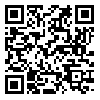BibTeX | RIS | EndNote | Medlars | ProCite | Reference Manager | RefWorks
Send citation to:
URL: http://erj.khu.ac.ir/article-1-23-en.html
Joy and happiness has always been as one of the most important needs of students and teachers at schools. Studies have shown that physical factors, management, and relationships at school are involved in creating happiness in teachers and students. In the present study, our main focus is on the physical aspect of schools, which should be in accordance with the
standards of education, according to the rules of our educational system. In this study we intend to evaluate the teachers' points of view about the impact of design standards of physical spaces, color, facilities and schools' sanitary system in creating healthy environments in schools. To achieve this objective, the study was a descriptive-survey and a self-made questionnaire was used to collect data. Its validity was given by five professors' determined, and its reliability was calculated with Cronbach's
alpha with value of 0/84. The population includes the elementary teachers of the fourth district in Karaj from which a sample of one hundred people are selected in a cluster sample; afterwards, for the statistical analysis, the average method and one- sample t method were carried out. The results expressed that according to the teachers, the standards related to color and
educational facilities of schools have had a desirable effect on teachers' and students' happiness, and conversely, the design standards of physical spaces and schools' sanitary system lead to the reduction of their happiness at schools.
Received: 2016/04/3 | Revised: 2021/11/13 | Accepted: 2016/04/3 | ePublished: 2016/04/3
| Rights and permissions | |
 |
This work is licensed under a Creative Commons Attribution-NonCommercial 4.0 International License. |




